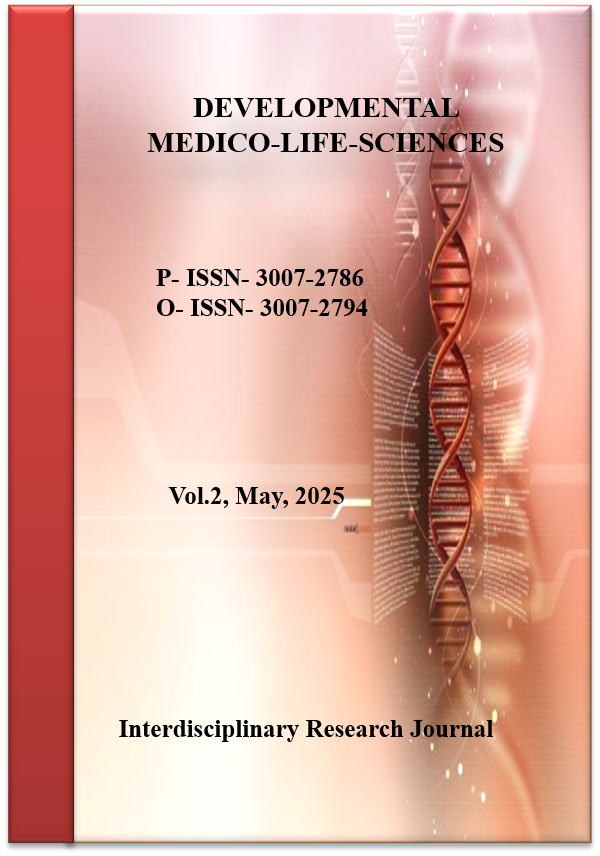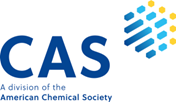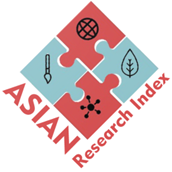Prevalence and Antibiotic Resistance Patterns of Uropathogenic Escherichia coli Isolated from Community-Acquired Urinary Tract Infections: A Cross-Sectional Study
Uropathogenic E. coli in Community UTIs: Prevalence and Resistance
DOI:
https://doi.org/10.69750/dmls.02.05.0134Keywords:
Urinary tract infection, Escherichia coli, antibiotic resistance, multidrug resistanceAbstract
Background: Escherichia coli is the main cause of urinary tract infections (UTIs), which are among the most common community-acquired diseases in the world. Particularly in low- and middle-income nations, the growing antibiotic resistance in uropathogenic E. coli (UPEC) has become a serious therapeutic issue.
Objective: To determine the prevalence and antibiotic resistance patterns of UPEC isolated from community-acquired UTIs in Pakistan.
Methods: From March 2024 to April 2025, this cross-sectional descriptive research was conducted in tertiary care facilities across Pakistan. 110 midstream urine samples from people with UTI symptoms were collected in total. UPEC was grown and identified using standard microbiological techniques, and the Kirby-Bauer disk diffusion method was used to test for antibiotic susceptibility in compliance with CLSI 2023 criteria. Resistance to at least three antibiotic classes was referred to as multidrug resistance (MDR). SPSS version 25 was utilized to analyze the data.
Results: UPEC was isolated in 68 of 110 urine samples, yielding a prevalence of 61.8%. The majority of cases occurred in females (72.1%), particularly in the 18–40 years age group (55.9%). Resistance was highest against ampicillin (85.3%), trimethoprim–sulfamethoxazole (73.5%), ciprofloxacin (66.2%), and levofloxacin (61.8%). Moderate resistance was noted to ceftriaxone (50.0%) and cefotaxime (48.5%), whereas aminoglycosides retained better activity, with gentamicin (39.7%) and amikacin (17.6%) showing lower resistance. Nitrofurantoin (14.7%) and fosfomycin (11.8%) were the most effective oral options, while carbapenem resistance was minimal (2.9%). MDR was detected in 51.5% of isolates.
Conclusion: UPEC is the predominant cause of community-acquired UTIs in Pakistan, with high resistance to commonly prescribed agents and significant multidrug resistance. Nitrofurantoin and fosfomycin remain reliable first-line therapies, while carbapenems should be preserved for complicated cases.
Downloads
References
Flores-Mireles AL, Walker JN, Caparon M, Hultgren SJ. Urinary tract infections: epidemiology, mechanisms of infection and treatment options. Nat Rev Microbiol. 2019;17(12):765-81. doi:10.1038/s41579-019-0233-3
Gajdács M, Burián K, Terhes G. Resistance levels and epidemiology of Gram-negative bacteria in urinary tract infections: a 10-year retrospective study. Antibiotics. 2019;8(3):143. doi:10.3390/antibiotics8030143
Talan DA, Takhar SS, Krishnadasan A, Abrahamian FM, Mower WR. Emergence of extended-spectrum β-lactamase-producing Escherichia coli in community-onset urinary tract infections in the United States. Clin Infect Dis. 2020;71(3):437-44. doi:10.1093/cid/ciz817
Hrbacek J, Cek M, Demir O, et al. Antibiotic resistance trends in urinary tract infections in Central and Eastern Europe: a systematic review. World J Urol. 2020;38(5):1107-18. doi:10.1007/s00345-019-02882-6
Gupta K, Bhadelia N. Management of urinary tract infections from multidrug-resistant organisms. Infect Dis Clin North Am. 2020;34(4):809-25. doi:10.1016/j.idc.2020.08.003
Olesen B, Frimodt-Møller J, Leegaard TM, et al. Fosfomycin and nitrofurantoin for the treatment of uncomplicated urinary tract infections: resistance trends and clinical implications. Clin Microbiol Infect. 2021;27(1):16-23. doi:10.1016/j.cmi.2020.08.003
Adator EH, Walker M, Narvaez-Bravo C, Zaheer R, Goji N, Cook SR, et al. Antimicrobial resistance in Escherichia coli from urine samples of outpatients with urinary tract infections in Canada, 2019–2021. Front Public Health. 2022;10:991059. doi:10.3389/fpubh.2022.991059
Linhares I, Raposo T, Rodrigues A, Almeida A. Frequency and antimicrobial resistance patterns of bacteria implicated in community urinary tract infections: a ten-year surveillance study (2010–2020). BMC Infect Dis. 2022;22:312. doi:10.1186/s12879-022-07238-7
Arshad M, Iqbal R, Saleem M, et al. Antimicrobial resistance in urinary isolates of Escherichia coli from Pakistan: a multicenter analysis. J Pak Med Assoc. 2022;72(10):1921-6. doi:10.47391/JPMA.5019
Dadi BR, Abebe T, Zhang L, Mihret A, Abate E, Yimtubezinash W, et al. Antimicrobial resistance of E. coli isolated from community-acquired urinary tract infections: systematic review and meta-analysis. BMJ Open. 2022;12:e056872. doi:10.1136/bmjopen-2021-056872
Manoharan A, Premkumar J, Chatterjee S, Mathur P, Kumar S. Antimicrobial resistance surveillance among uropathogenic Escherichia coli from tertiary care hospitals in India: results from 2019–2022. Indian J Med Microbiol. 2023;41(2):182-8. doi:10.1016/j.ijmmb.2023.04.003
Shaikh S, Fatima J, Shakil S, Rizvi SM. Antibiotic resistance patterns of uropathogenic E. coli in Pakistan: clinical significance and public health implications. Infect Drug Resist. 2023;16:2329-39. doi:10.2147/IDR.S418201
Dinkelacker AG, Vogt A, Heeg K, Kaase M, Hamprecht A. Clinical relevance of multidrug-resistant E. coli in community-acquired urinary tract infections: a German multicenter study. Eur J Clin Microbiol Infect Dis. 2023;42(4):567-76. doi:10.1007/s10096-022-04595-8
World Health Organization. Global antimicrobial resistance and use surveillance system (GLASS) report 2023. Geneva: WHO; 2023.
Tariq A, Jamil N, Raza MZ, et al. Antibiotic resistance in uropathogenic Escherichia coli: a multicenter clinical study in Pakistan. J Glob Antimicrob Resist. 2024;37:237-44. doi:10.1016/j.jgar.2024.01.009
Patel PK, Goswami NN, Soni S, Tripathi CB. Changing trends in antimicrobial resistance patterns of uropathogenic E. coli in outpatient settings: a five-year study (2019–2023). J Infect Public Health. 2024;17(6):876-83. doi:10.1016/j.jiph.2024.02.007
Younas A, Hussain A, Raza A, et al. Clinical and microbiological profile of multidrug-resistant uropathogens in Pakistan: implications for empirical therapy. Pak J Med Sci. 2024;40(2):345-52. doi:10.12669/pjms.40.2.8911
Clinical and Laboratory Standards Institute. Performance standards for antimicrobial susceptibility testing. 34th ed. CLSI supplement M100. Wayne (PA): CLSI; 2024.
Sánchez-Benito R, Esteban J, García-Coca M. Multidrug-resistant Escherichia coli in community-acquired urinary tract infections: recent trends and therapeutic challenges. Antibiotics. 2024;13(1):88. doi:10.3390/antibiotics13010088
Lim J, Choi MJ, Kim MH, et al. Fosfomycin and nitrofurantoin as first-line therapies for community-acquired UTI: a Korean multicenter study. BMC Infect Dis. 2024;24:511. doi:10.1186/s12879-024-09233-4
Chen Y, He T, Gao J, Chen L. Carbapenem resistance in Escherichia coli: global epidemiology, molecular mechanisms, and clinical management. Front Microbiol. 2025;16:1321450. doi:10.3389/fmicb.2025.1321450
Khan S, Javed MT, Raza A, et al. Prevalence of multidrug-resistant uropathogens in community settings of South Asia: a systematic review and meta-analysis, 2019–2024. PLoS One. 2025;20(3):e0301345. doi:10.1371/journal.pone.0301345
Alghamdi S, Alotaibi F, Alsulami A, et al. Community-acquired urinary tract infections and resistance patterns in the Middle East: a multicenter study. BMC Public Health. 2025;25:404. doi:10.1186/s12889-025-20117-0
Usman M, Rauf A, Naeem F, et al. Clinical outcomes of multidrug-resistant E. coli UTIs in Pakistan: a prospective observational study. BMC Infect Dis. 2025;25:678. doi:10.1186/s12879-025-09876-3
Mushtaq A, Rahman S, Farooq S, et al. Antibiotic prescribing practices and stewardship gaps in community-acquired UTI management in Pakistan. J Glob Health. 2025;15:01010. doi:10.7189/jogh.15.01010
Kwon Y, Park S, Lee H, et al. Global dissemination of multidrug-resistant Escherichia coli in urinary tract infections: implications for surveillance and stewardship. Lancet Infect Dis. 2025;25(2):e56-68. doi:10.1016/S1473-3099(24)00599-8
Tanveer M, et al. Effectiveness of a school-based physical activity intervention on overweight and obesity among children and adolescents in Pakistan. PLoS One. 2025;20(2):e0317534. doi:10.1371/journal.pone.0317534
Tanveer M, et al. Associations of 24-h movement behaviour with overweight and obesity among school-aged children and adolescents in Pakistan. Pediatr Obes. 2025;20(2):e13208. doi:10.1111/ijpo.13208
Tanveer M, et al. Association of sleep duration with overweight and obesity among school-aged children and adolescents in Pakistan. J Educ Health Promot. 2025;14(1):43. doi:10.4103/jehp.jehp_1453_24
Tanveer M, et al. Parental support and involvement in sports and their association with overweight and obesity among children in Pakistan. Phys Act Rev. 2025;13(1):35-47. doi:10.16926/par.2025.13.04
Tanveer M, et al. Association of physical activity and physical education with overweight and obesity among school-aged children in Pakistan. Adv Public Health. 2024;2024:5095049. doi:10.1155/2024/5095049
Tanveer M, et al. School-level factors and sport facility parameters associated with overweight and obesity among Pakistani children. Sports. 2024;12(9):235. doi:10.3390/sports12090235
Tanveer M, et al. Nutrition behaviour and food intake and their association with overweight and obesity among children in Pakistan. AIMS Public Health. 2024;11(3):803-18. doi:10.3934/publichealth.2024040
Tanveer M, et al. Community-level physical activity opportunities and supportive environments associated with overweight and obesity among Pakistani children. Kurdish Stud. 2024;12(2):6425-32. doi:10.53555/ks.v12i2.2845
Tanveer M, et al. Unhealthy intrapersonal behaviours and association with BMI among Pakistani children. J Popul Ther Clin Pharmacol. 2024;31(3):50-62. doi:10.53555/jptcp.v31i3.4706
Tanveer M, et al. BMI and interpersonal family-level factors among Pakistani school-aged children. J Popul Ther Clin Pharmacol. 2024;31(2):2365-76. doi:10.53555/jptcp.v31i2.4576
Tanveer M, et al. Prevalence of underweight, overweight, and obesity among Pakistan school-aged adolescents. Int J Environ Res Public Health. 2022;19(18):11619. doi:10.3390/ijerph191811619
Tanveer M, et al. Community-level factors associated with BMI among Pakistani school-aged adolescents. Pak J Med Health Sci. 2022;16(9):463-6. doi:10.53350/pjmhs22169463
Tanveer M, et al. Parental health attitudes and knowledge associated with BMI among Pakistani adolescents. Pak J Med Health Sci. 2022;16(9):479-82. doi:10.53350/pjmhs22169479
Tanveer M, et al. BMI prevalence and demographic associations among Pakistani adolescents. Pak J Med Health Sci. 2022;16(6):212-5. doi:10.53350/pjmhs22166212
Tasawar A, Tanveer M. Psychological coping strategies among football players: a comparative study. J Popul Ther Clin Pharmacol. 2024;31(3):962-75. doi:10.53555/jptcp.v31i3.5045
Roy N, Tanveer M, Liu YH. Stress and coping strategies for international students in China during COVID-19 pandemic. Int Res J Educ Innov. 2022;3(1):1-12. doi:10.53575/irjei.v3.01.1(22)1-12
Tanveer M, et al. Screen-based sedentary behaviour and overweight/obesity among Pakistani adolescents. Sport Sci Health. 2025:1-12. doi:10.1007/s11332-025-01102-5
Al-Mhanna SB, Tanveer M. Fear of re-injury post-ACL reconstruction: cognitive-behavioural interventions. Health Nexus. 2025;3(4):1-11. doi:10.61838/kman.hn.3.4.9






















